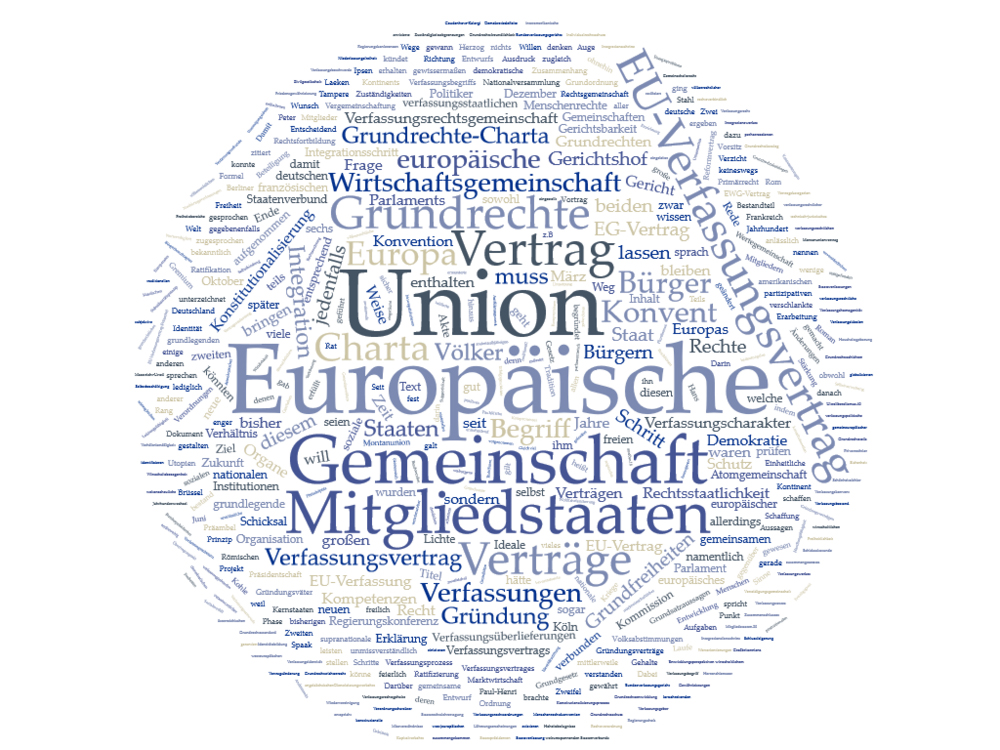Abstract
Obwohl der Ursprung der europäischen Einigungsgeschichte im wirtschaftlichen Bereich lag, hatte die Integration von Beginn an auch politischen Charakter. Schon die römischen Verträge enthielten Ansätze einer Konstitutionalisierung und auch die Bezeichnung der Verträge als Verfassung wurde seit den 60er-Jahren unter Rechtswissenschaftlern immer gebräuchlicher, auch wenn dies stets umstritten war. Unabhängig vom Streit über den Verfassungsbegriff hat die von den Verträgen gebildete Rechtsordnung jedenfalls inhaltlich Verfassungscharakter. Sie enthält Regelungen, die man gemeinhin mit einer Staatsverfassung verbindet. Die europäische Integration war stets von verfassungsrechtlichen Idealen getragen, weshalb man die Mitgliedstaaten auch als eine Verfassungsrechtsgemeinschaft bezeichnen kann. Bedeutende Weiterentwicklungen erfuhr der Konstitutionalisierungsprozess mit der Konventsmethode und der Erarbeitung der Grundrechte-Charta. Fortgesetzt wurde dieser Prozess mit dem Entwurf über den Verfassungsvertrag für Europa. Da in ihm typische Gehalte einer Verfassung verkörpert sind, verdient er durchaus auch diese Bezeichnung. Auf seiner Basis sollte ein schlanker, übersichtlicher und verständlicher Verfassungstext geschaffen werden, der die Reform und Integration Europas weiter führt und ein Instrument der Identitätsstiftung sein kann.
Even though the history of European unification has its origins in the economic sector, the integration process was also a political one from the beginning. The Treaty of Rome already contained elements of constitutionalisation and the designation of the Treaty as a constitution became more and more common among legal scholars since the 1960s, although this has always been controversial. Irrespective of the dispute about the term “Constitution”, the legal order which has been established with the treaties has constitutional character at least in substance. It contains rules that one regularly associates with national constitutions. European integration has always been shaped by constitutional ideals, hence one can call the member states a constitutional community. Important steps forward in the constitutionalisation process were the convention method and the production of the Charter of Fundamental Rights. The Draft Constitutional Treaty for Europe continued this process. As it embodies typical elements of a Constitution, the Treaty deserves its name. It should lay the foundations for a clear, coherent and concise constitutional text which could then further reform and integration in Europe and could be an instrument for identity construction.
Si l’histoire de l’unification européenne a commencé dans le domaine économique, il n’en reste pas moins que, dès l’origine, l’intégration européenne revêtait également une dimension politique. Déjà, les Traités de Rome portaient les germes d’une constitutionnalisation et, à partir des années soixante, le mot « constitution » est devenu un terme de plus en plus usité dans la doctrine juridique pour désigner les traités, même si cette terminologie était toujours controversée. Indépendamment des débats existant autour de la notion de « constitution », l’ordre juridique institué par les Traités présente au fond, en tout état de cause, le caractère d’une constitution. Cet ordre juridique comporte des règles communément associées à la Constitution d’un État. L’intégration européenne a toujours été portée par des idéaux constitutionnels, de sorte que les États membres peuvent également être qualifiés de communauté constitutionnelle. Le processus de constitutionnalisation a connu des développements ultérieurs importants avec la méthode de la Convention et l’élaboration de la Charte des droits fondamentaux. Une autre étape ultérieure dans ce processus a été le projet de traité établissant une Constitution pour l’Europe. Eu égard aux éléments typiques d’une constitution contenus dans ce projet, celui-ci mérite bien ce nom de Constitution. Il conviendrait de créer sur cette base un texte constitutionnel concis, clair et compréhensible, qui poursuivrait le chemin de la réforme et de l’intégration européennes et qui serait susceptible de constituer un instrument établissant une identité commune.

Dieses Werk steht unter der Lizenz Creative Commons Namensnennung - Nicht-kommerziell - Keine Bearbeitungen 4.0 International.
Copyright (c) 2010 Zeitschrift für Europäische Rechtslinguistik (ZERL)

